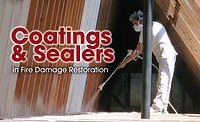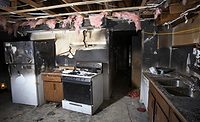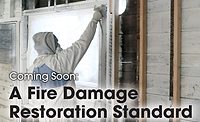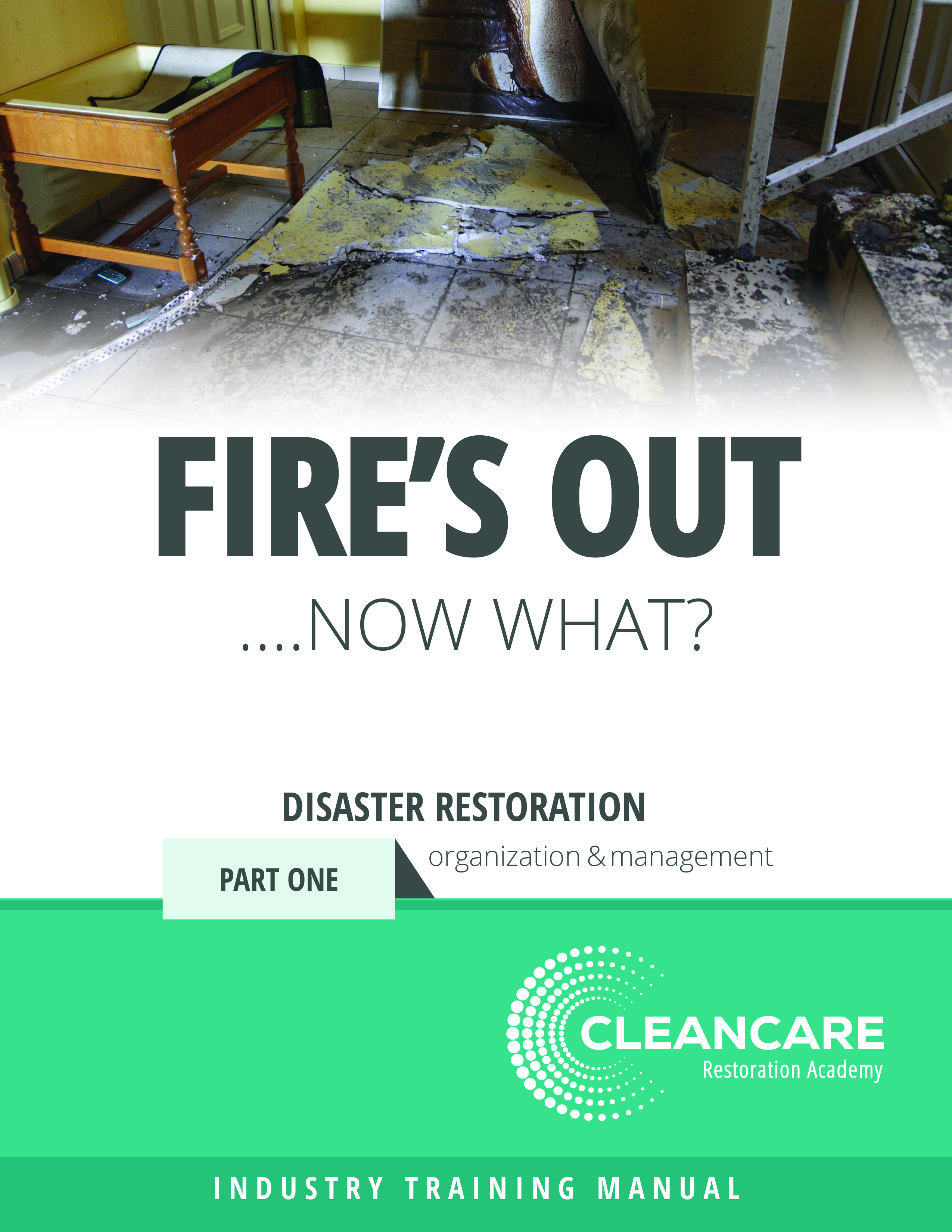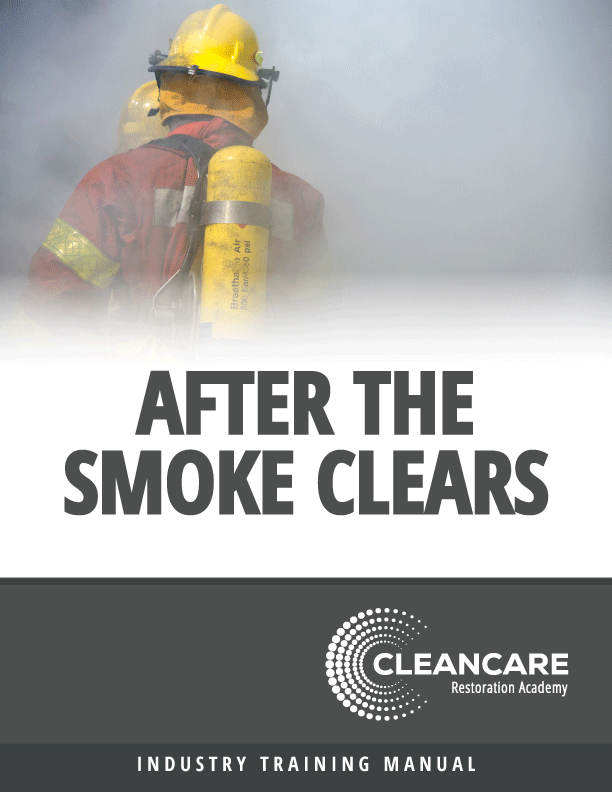Following Fire Damage Restoration Fundamentals to Save an Elementary School

Photos courtesy of ICP Construction Group
Any size fire is enough to interrupt operations at an educational facility. It’s how to recover from the fire in a timely fashion that often proves to be challenging. After a minor fire occurred at the Sierra House Elementary School in South Lake Tahoe, Calif., in November 2018, officials knew proper cleanup and remediation efforts would be required to return the building to normal operation.
The Lake Tahoe Unified School District (LTUSD), of which the elementary school is a part, took immediate action by securing qualified assessment and remediation professionals to conduct proactive soot cleaning in undamaged areas of the school, as well as air testing to determine whether it was safe for students to return to the building. Encouraging air sample test results led to the decision to allow students to return to an improvisational but functioning school within a few weeks of the initial fire.
But though school was back in session, the process of repairing fire-damaged and contaminated areas had just begun. LTUSD set an aggressive completion schedule over the winter holiday break and closely collaborated with restoration professionals to ensure a timely, full restoration for the school. Here’s how it happened:
Restoration begins. LTUSD began by hiring an independent consulting professional, referred to in industry standards as the IEP (Indoor Environmental Professional), ensuring there was no relationship with the remediation contractor. A qualified, locally based IEP firm, Premier Environmental, was chosen to provide on-site expertise in engineering, industrial hygiene, and fire/smoke damage assessment. LTUSD also made available an in-house Recovery Project Manager with an engineering and environmental background who could work as a liaison between the IEP and the school district. The district architect was also brought in as a consultant.

The remediation contractor already selected was BELFOR—one of the largest restoration contractors worldwide—which operates a nearby office staffed with experienced fire professionals. BELFOR was also equipped to provide abatement services for asbestos and lead as needed. Since speed is essential when mitigating the degrading effects of smoke damage, the BELFOR Stateline crews acted immediately, isolating areas directly affected by the fire and controlling air movement with carbon filtration to remove contaminants and reduce odors. Proactive air scrubbing was also conducted in the areas not impacted by the fire.
Premier Environmental consultants finalized the protocol for soot cleaning based on surveys and site analysis. These surveys included determinations concerning the presence of any potentially hazardous materials, such as asbestos and lead paint, not directly related to the fire but subject to regulation. Lead testing with an XRF instrument found no lead in paint or tile in any of the affected areas, but a door in the contaminated burn area tested positive for asbestos. It had been damaged by the entering fire department, and now friable (i.e., prone to becoming airborne and inhaled) asbestos fibers were potentially present.
Standard asbestos remediation protocols were initiated, and the area was abated by removal of the asbestos-containing material, then cleared after negative results from additional air testing. Meanwhile, the LTUSD requested that the air quality be tested by a method using sample canisters shipped to a laboratory for identification of all detected Volatile Organic Compounds (VOCs). VOCs were detected in each sample, but all concentrations were found to be well below the regulatory levels, and not necessarily related to fire damage.

BELFOR’s experienced project manager with fire damage expertise ran the remediation project full time. Within two weeks, full-scale remediation efforts were underway, including replacement of ceiling tiles and other porous materials; deep cleaning within the attic space; and restoration of the HVAC system and duct work in the source area, hallways, and restrooms. By Dec. 17, a cleaning area was set up outside the building to detail contents from classrooms, and the elementary school moved to an alternate site for the last week before winter break, giving BELFOR and Premier an unoccupied building in which to work.
Clean, deodorize and seal. The first fundamental principle of fire restoration is cleaning—there is no substitute for the hard work involved in removing combustion contaminants.
These contaminants, called products of incomplete combustion (PICs), include soot and ash and can be detrimental to a building’s appearance. Another major concern is degradation caused by corrosive residues. When cellulosic components and contents burn, nitrogen compounds are released that combine with extinguishing water to form nitric acids. With plastics, the bad actor released is generally chlorine-forming chloric acids (such as hydrochloric acid) with water. These acids can be highly damaging—another reason rapid cleaning is crucial.
Additionally, combustion residues often involve toxins like polyaromatic hydrocarbons (PAHs), strong active solvents (benzene, toluene, naphthalene), furans, dioxins, and phenols. Removing these concerning toxins wherever possible is another reason why expert cleaning is required.
Finally, there is smell. Smoke odor can reappear in a restored property many months after work is complete. Soot, ash and oils, odors can vary substantially in manifestation and intensity depending on characteristics of the fire. Every structure fire is unique, and unless properly addressed, smoke odor and irritation can continue indefinitely. Not only is the smell unpleasant, but substances contaminated by smoke odor can trigger asthma or other serious health issues for some building occupants.

These lingering issues all make the choice of odor sealers and coatings a critical one. Selecting the proper sealer is important in the professional deodorization process, and such was the case at Sierra House Elementary.
In a case like this, deodorization begins with demolition and removal of materials that cannot be saved. Then, additional odor-rich residue is removed through cleaning processes known as “subtractive deodorization.” Next, a variety of chemical deodorizers can be employed to address odor: masking agents, perfumes/scents, fixatives, and counteractants. Metazene-based solutions that react with and change combustion compounds are a common choice.
But before sealing could take place, additional smoke residue on a wall cavity was discovered, prolonging the cleaning phase. This is common in fire remediation and makes a thorough cleaning process all the more important. A few repeat discoveries at Sierra House Elementary delayed the timeline into February 2019. Fortunately, BELFOR’s depth of resources could compensate with additional skilled workers and equipment as needed.
Sealer application. After cleaning was finally complete at Sierra House Elementary, it was time for the final step—sealing.
Fire restoration jobs have traditionally been finished with alcohol-based shellac, but more advanced solutions are chosen today for long-term odor control. Shellac offers the necessary performance in this regard, but water-based solutions that can provide comparable or better performance can offer a variety of advantages in applications like Sierra House Elementary. Both Premier and BELFOR had extensive previous experience working with water-based products, and both felt confident that support was available.
“Knowing that the detail cleaning and remediation procedures of building surfaces was somewhat limited to the exposed surfaces only, there was concern about how to address the interstitial spaces and also the penetration of smoke odors into porous wood materials,” said Nate Seward, PE, CIH and owner, Premier Environmental. “Therefore, we recommended the contractor use Fiberlock Recon in accordance with the manufacturer’s specifications to be applied to seal the wood framing and/or other structural building materials impacted by the smoke damage after the cleaning process was performed. We recommended Recon as a water-based sealer based on our knowledge, experience and understanding of its effectiveness and specific design for sealing smoke related odors, in addition to the added benefit of the manufacturer’s warranty.”
Any sealer must reliably seal smoke odor and stains. Shellac can cause condensation and mold issues because the dry film is a total vapor barrier. While shellac blocks stains and smoke odor, it also stops that surface from breathing; a water-based product will not. A water-based option also offers lower odor, lower VOC levels, and a lack of combustibility.

For the installer, water-based sealers can offer some advantages. Personal protective equipment (PPE) requirements are simpler, especially in tight spaces like the elementary school’s attic spaces. Soap and water-based cleanup is significantly easier and quicker. Another expense associated with shellac is the extended time required to run air movers and scrubbers to remove powerful alcohol odors that can linger for days. Water-based products have less odor at the outset and far lower VOC content and allow contractors to reconstruct wall systems faster. Because of these advantages, water-based sealers that can demonstrate the right performance have become increasingly accepted over shellac, and such was the case for the Sierra House Elementary remediation project.
BELFOR crews worked from February–May 2019 to apply the water-based sealer as their crews progressed through the fire damaged areas of the school. An airless spray application method was chosen, and cleanup was easy and cost-effective. Simpler spray equipment and settings were used, and the hybridized acrylic resin system caused no noticeable tip wear, overspray or clogged spray tips. In the end, replacing the traditional shellac with the water-based solution helped yield a net 20% savings when labor and material use were factored in.
The Sierra House Elementary School is now fully restored thanks to teamwork and proper adherence to fire remediation and restoration best practices by everyone involved.
Looking for a reprint of this article?
From high-res PDFs to custom plaques, order your copy today!




